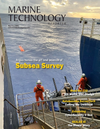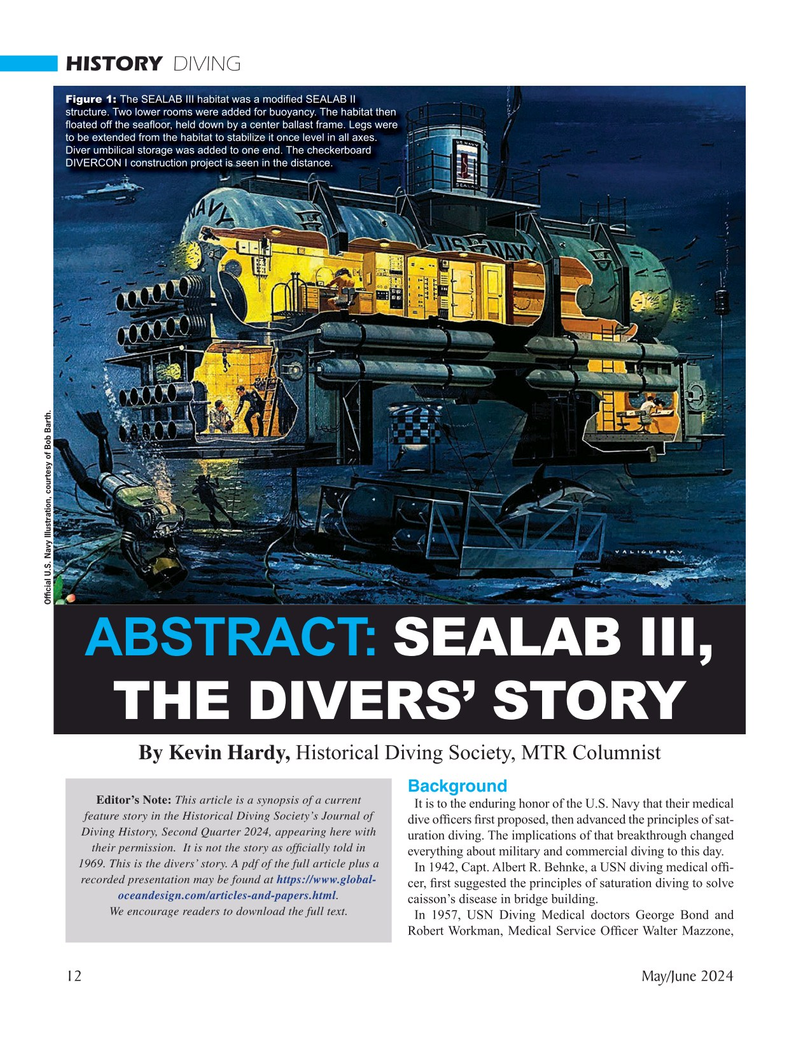
Page 12: of Marine Technology Magazine (May 2024)
Read this page in Pdf, Flash or Html5 edition of May 2024 Marine Technology Magazine
HISTORY DIVING
Figure 1: The SEALAB III habitat was a modi? ed SEALAB II structure. Two lower rooms were added for buoyancy. The habitat then ? oated off the sea? oor, held down by a center ballast frame. Legs were to be extended from the habitat to stabilize it once level in all axes.
Diver umbilical storage was added to one end. The checkerboard
DIVERCON I construction project is seen in the distance.
Of? cial U.S. Navy Illustration, courtesy of Bob Barth.
ABSTRACT: SEALAB III,
THE DIVERS’ STORY
By Kevin Hardy, Historical Diving Society, MTR Columnist
Background
Editor’s Note: This article is a synopsis of a current
It is to the enduring honor of the U.S. Navy that their medical feature story in the Historical Diving Society’s Journal of dive of? cers ? rst proposed, then advanced the principles of sat-
Diving History, Second Quarter 2024, appearing here with uration diving. The implications of that breakthrough changed their permission. It is not the story as of? cially told in everything about military and commercial diving to this day.
1969. This is the divers’ story. A pdf of the full article plus a
In 1942, Capt. Albert R. Behnke, a USN diving medical of? - recorded presentation may be found at https://www.global- cer, ? rst suggested the principles of saturation diving to solve oceandesign.com/articles-and-papers.html.
caisson’s disease in bridge building.
We encourage readers to download the full text.
In 1957, USN Diving Medical doctors George Bond and
Robert Workman, Medical Service Of? cer Walter Mazzone, 12 May/June 2024
MTR #4 (1-17).indd 12 6/2/2024 11:22:21 AM

 11
11

 13
13
